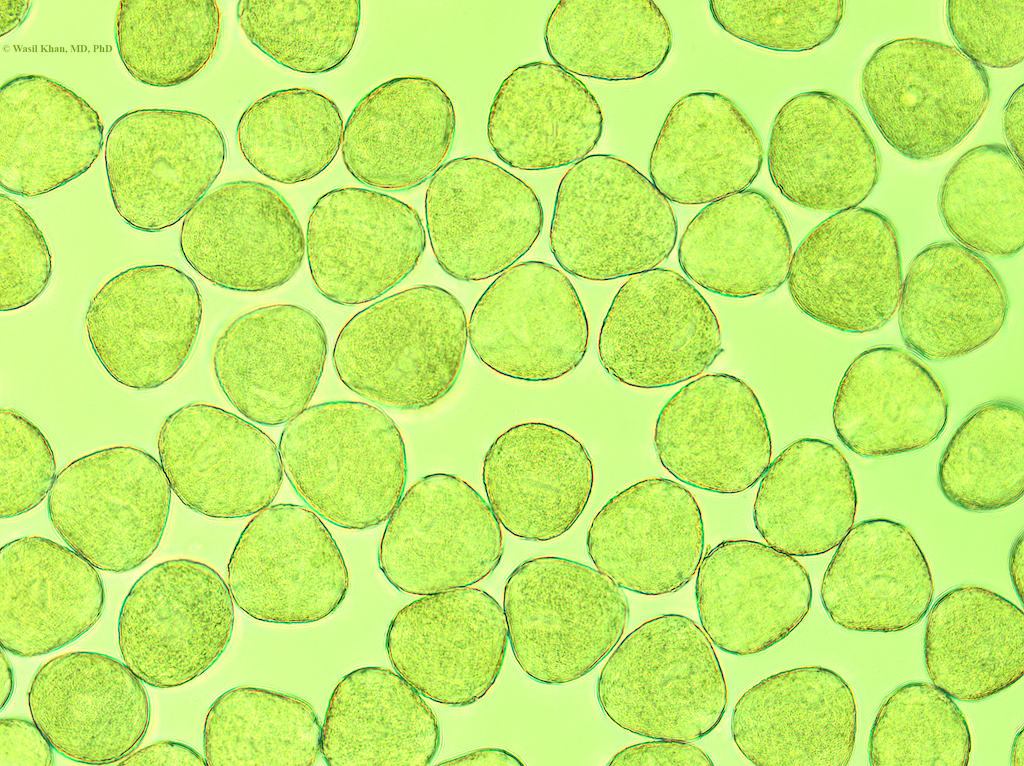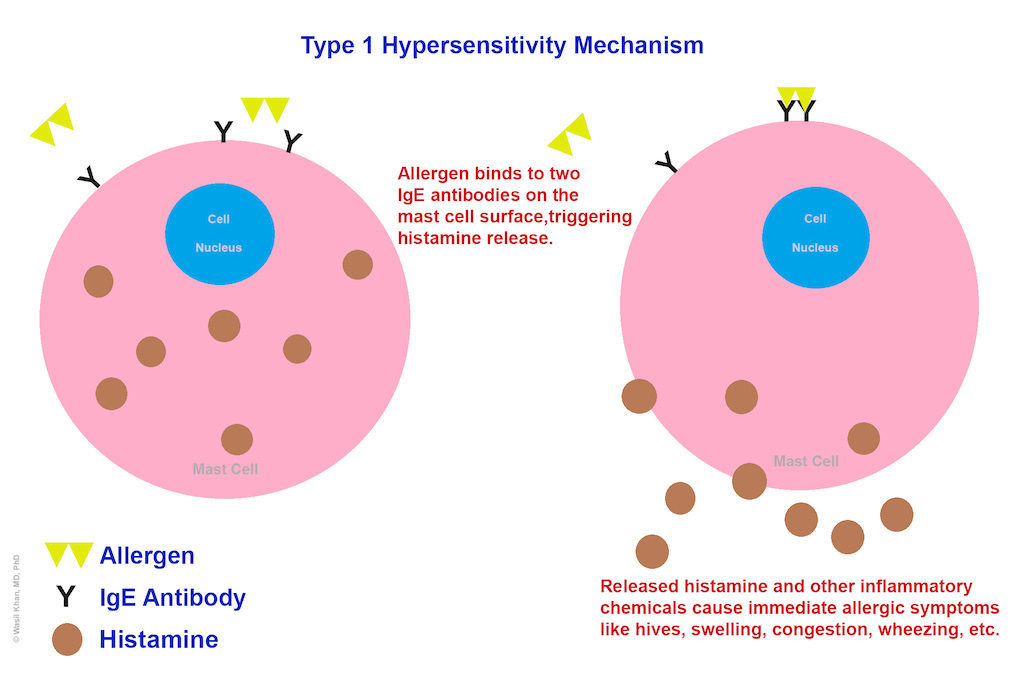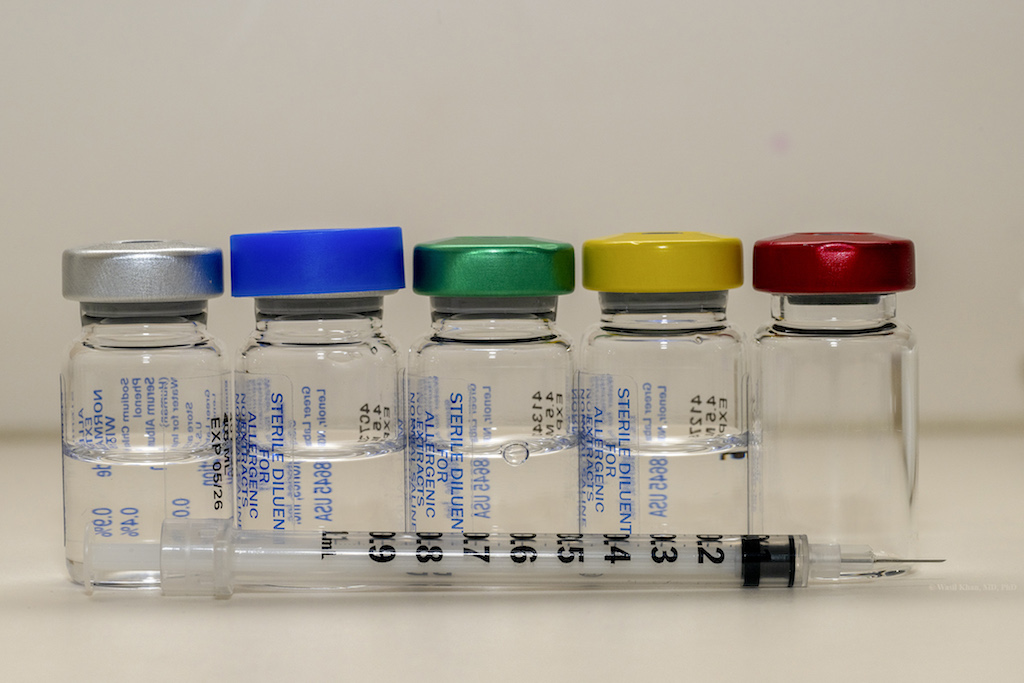Serving the Lowcountry and Coastal Empire of Georgia and South Carolina.
Tuesday, February 21, 2023

We are here to help our patients who suffer from allergies get through the upcoming allergy season. SouthCoast Health Allergist, Dr. Wasil Khan is explaining what an allergy is and treatment options for the immune system triggered by allergies. Dr. Khan also gives an overview of Aeroallergen Immunotherapy (AIT), an option when medications do not adequately control symptoms.
Spring is an enjoyable time of year, bringing milder temperatures and opportunities for outdoor activities. Many plants such as trees and grasses pollinate from late winter through spring, sending their pollen grains aloft in the wind, or attached to the bodies of pollinating insects. The purpose of all this pollination is to deliver the genetic material of male plants, which is contained in pollen, to the flowers of female plants, resulting in fertilization and production of seeds to bring about the next generation of plants. (see Figure 1). Unfortunately, not all pollen goes where it’s supposed to go, and can end up landing on air exposed surfaces like our eyes, nasal passages, mouth, throat and lungs.
Most people feel no ill effects from pollen exposure, but approximately 3 out of 10 people report unpleasant symptoms like sneezing, nasal congestion and drainage, itching of the eyes, nose and upper airway; cough, and even wheezing with shortness of breath. These people who experience adverse symptoms upon exposure to pollens and other allergens are allergy sufferers. The main conditions which are exacerbated in allergy suffers upon exposure to inhalant allergies include allergic rhinitis (nasal symptoms), allergic conjunctivitis (ocular symptoms), and allergic asthma (lower respiratory symptoms caused by reversible narrowing of the airways).
The term allergy describes an immune-system stance that causes a harmful reaction to externally derived substances which, otherwise, would be harmless to encounter. Therefore, an allergy is a hypersensitivity, or the potential for an immunologically mediated overreaction to a foreign substance (like a pollen allergen) that should normally be tolerated. The most common type of allergy that causes symptoms upon exposure to inhalant allergens like those found in pollens, molds, dust, and pet dander is a Type 1 allergy. The mechanism underlying a Type 1 hypersensitivity reaction depends upon the presence of an IgE antibody on specific immune system cells, like mast cells. IgE has a “mouth” that fits a specific allergen. When the specific allergen is encountered it binds to IgE, thereby triggering release of inflammatory chemicals from the cell. These inflammatory chemicals including histamine, and several others, and cause allergic symptoms when released (see Figure 2). There are additional Types of allergic / hypersensitivity reactions, such as Type 4 reactions which are responsible for symptoms like skin inflammation in people who are sensitized to thinks like poison ivy, cosmetics, and nickel. However, Type 4 allergic reactions will be a topic of discussion in a future blog article. The remainder of this article will pertain to Type 1 allergy only.
The effective options available for allergy management include avoidance of allergens, using medications to reduce symptoms caused by allergen exposure, and thirdly, modifying the allergy that causes symptoms. Of course, avoidance of allergens is sometimes difficult, as when allergens are ubiquitous in the air during peak pollen seasons, or when a beloved pet to whom one is allergic lives in the home. There are measures to reduce allergen exposure to a degree, but complete avoidance is often not possible. Medications are helpful in circumstances where allergen exposure is unavoidable, and many effective allergy medications are now available over the counter. However, medications do not adequately control symptoms in over half of allergy sufferers. Aeroallergen Immunotherapy (AIT) is another tool available to manage symptoms from allergies, and AIT has proven to be beneficial in treating allergic rhinitis, allergic conjunctivitis, and allergic asthma.
AIT was first used over a hundred years ago, and involves administering incremental doses of relevant allergens (Figure 3) to an allergy sufferer with the goal of reducing symptoms from allergen exposure. This has historically been done by injecting allergens under the skin (subcutaneous immunotherapy or SCIT), but administration of allergens as melting tablets under the tongue (sublingual immunotherapy or SLIT) has also been used in recent years. In general, SCIT is more effective than SLIT, but SLIT can be self-administered at home, and carries less risk of an allergic reaction to the treatment.
Immunotherapy is currently the only treatment available for allergies that causes reduction / abolition of the allergic response to allergens. This is in contrast to the other allergy management strategies like allergen avoidance which reduces exposure to triggering allergens, and medications which suppress symptoms caused by exposure to triggering allergens.
The mechanism through which allergen immunotherapy works is complex and is too lengthy to cover in detail in this blog article, but the changes AIT produces include an eventual decrease in the level of IgE antibody that binds offending allergens, and increases the level of another antibody class, IgG, that actually inhibits binding of allergen to symptom-triggering IgE. AIT also expands a group of regulatory immune system cells that turn the immune system away from an allergic stance, decreasing current allergies, and the potential for developing additional allergies and allergic disorders. AIT has demonstrated benefit in reducing symptoms and medication requirements in allergic rhinitis, asthma, and allergic conjunctivitis. One very interesting finding from a 2016 study examining the chance of allergic disorders developing in children of parents with allergies indicated that children born to allergic parents who underwent 2 years of SCIT were 26% less likely to develop an allergic condition as compared to the general population. On the other hand, children of allergic parents who did not undergo SCIT were over 80% more likely to develop an allergic disorder as compared to the general population.
As with most medical therapies, there are costs / risks of the therapy that must be weighed against the benefits of treatment. For aeroallergen immunotherapy, which involves giving doses of allergens to the allergic individual, there is a risk of producing an allergic reaction in the individual. This is more of a risk with SCIT than with SLIT. Therefore, SCIT injections must be administered in an environment where an allergic reaction of any degree – from mild localized pain, itching and swelling at the injection site all the way up to near fatal reactions, can be managed. Fatal reactions are exceedingly rare, with review of reaction data indicating fatal reactions to SCIT occurring once per 2.5 million injections. SLIT, which carries a lesser risk, can be self-administered at home once the initial dose has been tolerated under observation in a physician’s office. However, SLIT is comparably less efficacious and is FDA approved for only grass, ragweed, and dust mite allergy in the United States.
The initial step in deciding whether AIT is a good option for treatment is determining if allergies to inhalant allergens are present. This is usually done by allergy skin testing and / or blood allergy testing. Both methods detect the presence of IgE antibodies that fits specific allergens. Once allergies have been identified, and the allergic individual has been diagnosed with at least one of the allergic conditions to include allergic rhinitis, allergic conjunctivitis, atopic dermatitis, or asthma, AIT becomes a treatment option. The benefits of AIT must be weighed against the costs / risks. AIT is riskier in people with cardiac conditions, vascular disease, poorly controlled asthma, and for people on certain medications like beta blockers.
Allergic patients with qualifying allergic conditions, who wish to reduce symptoms from allergen exposure, and reduce their medication requirements, are candidates to undergo AIT as long as this treatment offers a favorable benefit to risk ratio. Women who become pregnant while on AIT can continue the therapy, especially if the dose reached has started to provide noticeable benefit, but the allergen dose is held at the same level until the mother is no longer pregnant. The dose is not incremented during pregnancy.
Immunotherapy dosing is performed in a way to minimize risk of an allergic reaction to the allergen dose. In SCIT, the dose starts a 0.05 ml of a solution that is 1 part allergen to 10,000 parts diluent, with several, gradually increasing amounts given once or twice a week, with at least one day between injection days. Once a volume of 0.5 ml is reached in a given dilution, a jump is made to a dilution that is ten times more concentrated. This process is continued until a dose of 0.5 ml of a dilution that is 1 part allergen to one part diluent (i.e. 50% allergen) is reached. Once this top dose has been continued for several weeks, the frequency of injections is reduced to every other week, and eventually monthly. Because of the risk of an allergic reaction to the injections, there is a required 30-minute observation period in the office The time recommended for AIT duration is at least 3 years after the top dose is reached, and no longer than 5 years past this timepoint. In the author’s experience, a noticeable reduction in allergic symptoms is present by 3 months into the AIT course. This continues to improve over the next 1 to 2 years.
The injections are administered with a thin, small needle that delivers the dose underneath the skin at he back of the arm, but not into muscle. The shots, therefore, are not very painful. Itching and swelling can develop at the injection sites after the shot is delivered.
Usually two, one in each arm. Some people only receive one, others up to three each time they come for their injections. The number depends on how many allergens need to be administered, which subsequently depends on how many allergies the shot recipient has.
As mentioned above, the recommended duration in the top dose is 3 to 5 years. This usually means the minimum total duration ranges from 3.5 to 4 years. Most of this time, however, is at a shot frequency of once a month.
Depending on the severity of the reaction, the dose is reduced and the incremental climb in dose thereafter may be in smaller amounts.
As mentioned in the article, reactions can range from mild localized redness and swelling, to fatal reactions. Fatal reactions are exceedingly rare (1 in 2.5 million injections). This is why injections are given in the office, followed by a 30-minute observation period so that reactions can be treated.
The injections do not contain a medication, but rather, the allergens to which the shot recipient is allergic. Therefore, side effects are typically limited to allergic reactions to the shots.
People who complete at least 3 years of AIT maintenance injections (meaning top dose injections) will usually have lasting benefit for several years.
Yes.
Not at this time. There are methods to decrease allergic symptoms from food allergy by delivering food allergen immunotherapy via a transdermal patch (currently available for peanut) and by oral immunotherapy involving the food allergic person ingesting incremental doses of the relevant food allergen over time.
Figure Captions

Figure 1. Red oak pollen photographed on February 19, 2023. Many allergenic tree species pollinate early in the year, beginning in winter and continuing through spring. The most visible pollen on outdoor surfaces in February in our area is pine pollen because of the relatively large size of pine pollen grains. However, this large size also makes pine pollen weakly allergenic. Oaks have much smaller pollen grains and cause significant allergic sensitization.
 Figure 2. In a Type 1 allergic reaction, binding of allergen by IgE that specifically fits the allergen triggers release of inflammatory mediator from mast cells. These mediators include histamine and other chemicals that cause allergic symptoms almost immediately after the allergen is encountered.
Figure 2. In a Type 1 allergic reaction, binding of allergen by IgE that specifically fits the allergen triggers release of inflammatory mediator from mast cells. These mediators include histamine and other chemicals that cause allergic symptoms almost immediately after the allergen is encountered.
 Figure 3. Aeroallergen immunotherapy vials contain allergen and diluent. The lowest allergen concentration is contained in the silver top vial to the left, and each subsequent vial contains a 10 times more concentrated allergen solution with the last, red topped vial containing a solution that is 50% allergen. The AIT series provides incremental doses of allergen until the top dose, a.k.a. maintenance dose is reached. Then this dose is continued for 3 to 5 years, usually at an injection frequency of once a month.
Figure 3. Aeroallergen immunotherapy vials contain allergen and diluent. The lowest allergen concentration is contained in the silver top vial to the left, and each subsequent vial contains a 10 times more concentrated allergen solution with the last, red topped vial containing a solution that is 50% allergen. The AIT series provides incremental doses of allergen until the top dose, a.k.a. maintenance dose is reached. Then this dose is continued for 3 to 5 years, usually at an injection frequency of once a month.
Ask your primary care physician for a referral to our SouthCoast Health allergist or call to make an appointment with us today at 912.527.5335. Our SouthCoast Health Allergy and Asthma services are offered at our Savannah, Richmond Hill, Pooler and Hinesville locations.
Whether you are looking for a primary care doctor or a pediatrician, or another medical specialist, SouthCoast Health has you covered with its wide range of world-class healthcare services, available throughout the Coastal Empire and Lowcountry. SouthCoast Health has 120 physicians and medical professionals in 18 locations in Savannah, Richmond Hill, Pooler, Rincon, Baxley, Hilton Head, Hinesville, and Statesboro. SouthCoast Health offers comprehensive medical services including: Family Medicine, Internal Medicine, Pediatrics, Allergy and Asthma, Cardiology, Endocrinology, Eye Care, Imaging, Infectious Diseases, Nephrology, Neurology, Physical Therapy, Podiatry, Surgery, Clinical Trial Research Studies, Diabetic Self-Management Training Sessions, Dietetic Counseling, Laboratory Services, Massage Therapy, Optical Shop, Pharmacy, and Urgent Care.